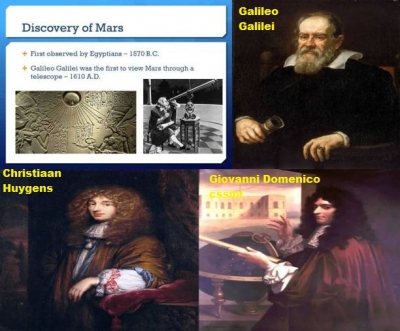
Our ancestors spent centuries observing the positions and movements of Mars. And yet, how the planet looked up-close remained a mystery. But an amazing invention in the hands of a talented Italian astronomer-cum-scientist changed that!
Galileo Galilei started observing Mars in 1610 using a low-power telescope he himself made. Though he could not make out any details of the Martian surface, this was the first time anyone was seeing Mars through a telescope. It also inspired many astronomers to follow in Galileo’s footsteps, and by 1659 we had our first sketch of the Martian surface! This drawing, made by Christiaan Huygens (a Dutch scientist), clearly shows Mars’ characteristic “dark spot” – a region called Syrtis Major Planum.
Huygens also determined the size of Mars, and the time it takes for it to complete a full rotation about its axis. In 1666, an Italian astronomer-cum-engineer, Giovanni Domenico Cassini, gave a better estimate; he said a day on Mars is 24-hours-and-40-minutes long, which is just three minutes more than the actual duration! He is also credited with the discovery of Mars’ polar ice caps.
By the 19th century, we had a better understanding of Mars’ topography. Detailed maps and more accurate estimates of Mars’ rotational period and size could be made, thanks to more powerful telescopes.
In fact, it was the U.S. Naval Observatory’s refracting telescope (the world’s largest one during that time) that helped the American astronomer, Asaph Hall, discover the two moons of Mars, Deimos and Phobos, in 1877.
Picture Credit : Google




